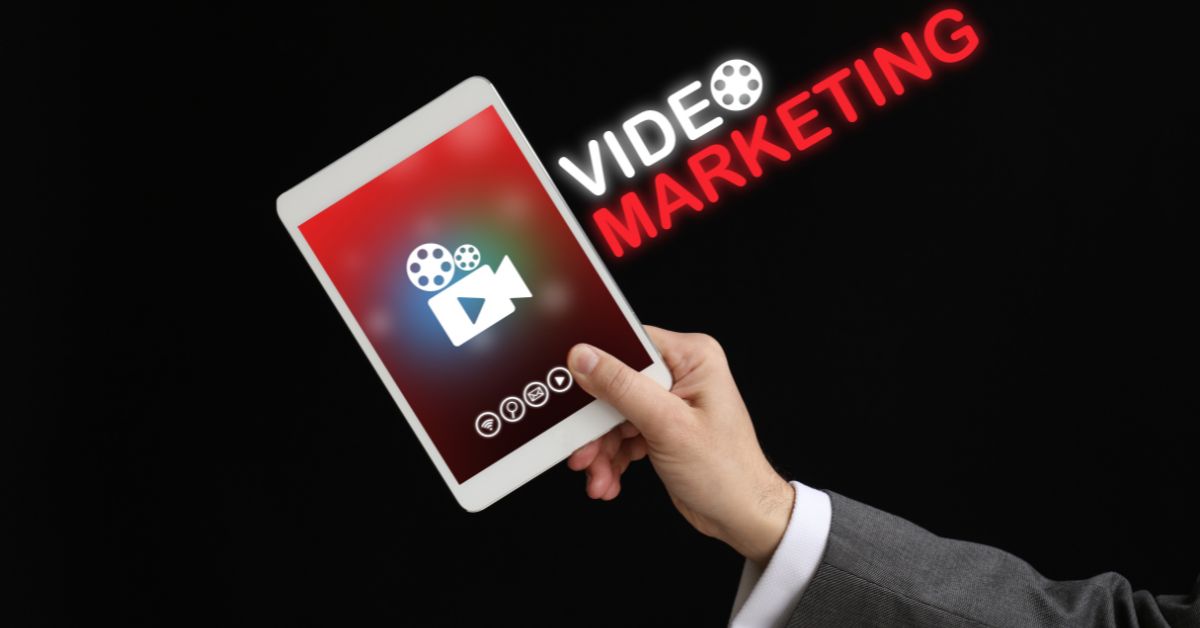Types of digital marketing have grown significantly due to the proliferation of business websites, advancements in email technologies, and the introduction of popular social channels.
Types of Digital Marketing
Digital marketing has evolved exponentially in recent years, becoming integral to modern business strategies. From social media to search engines, the array of tools and tactics available to marketers today is vast and varied. In this comprehensive guide, we’ll explore the different types of digital marketing, offering insights into how each can be leveraged to achieve your business goals. Whether you’re a seasoned marketer or starting, understanding these types will help you craft a more effective digital strategy.
1. Search Engine Optimization (SEO)
What is SEO?
Search Engine Optimization (SEO) is the practice of optimizing your website and its content to improve visibility in search engine results pages (SERPs). The ultimate goal is to rank higher for relevant keywords and phrases, thereby attracting organic (non-paid) traffic.

Key Components of SEO:
- Keyword Research:
- Identifying and targeting specific keywords and phrases that potential customers or users are likely to search for.
- Tools like Google Keyword Planner, SEMrush, and Ahrefs can help in finding relevant keywords.
- On-Page SEO:
- Content Optimization: Ensuring that the content is relevant, high-quality, and provides value to the reader.
- Meta Tags: Optimizing meta titles, descriptions, and header tags (H1, H2, etc.) to include target keywords.
- URL Structure: Creating user-friendly and keyword-rich URLs.
- Internal Linking: Linking to other relevant pages within your website to improve navigation and spread link equity.
- Off-Page SEO:
- Backlink Building: Acquiring high-quality backlinks from authoritative websites. This signals to search engines that your content is trustworthy and valuable.
- Social Signals: Engagement on social media platforms can indirectly impact SEO by increasing the visibility and sharing of your content.
- Guest Blogging: Writing articles for other websites and including links back to your site.
- Technical SEO:
- Site Speed: Ensuring your website loads quickly, as page speed is a ranking factor.
- Mobile-Friendliness: Optimizing your website for mobile devices.
- Crawlability: Make sure search engine bots can easily crawl and index your site. This includes having an XML sitemap, using robots.txt correctly, and avoiding duplicate content.
- Structured Data: Implementing schema markup to help search engines understand your content better.
- Local SEO:
- Optimizing for local search queries is especially important for businesses that serve a specific geographic area. This includes claiming and optimizing your Google My Business listing, getting reviews, and ensuring consistent NAP (Name, Address, Phone) information across directories.
- Analytics and Monitoring:
- Using tools like Google Analytics, Google Search Console, and other SEO tools to track performance, monitor rankings, and understand user behavior.
- Regularly updating and optimizing your strategies based on data and trends.
SEO Best Practices:
- Focus on User Experience (UX): Ensure that your website is easy to navigate, aesthetically pleasing, and provides value to the users.
- Quality Content: Always prioritize creating content that is informative, engaging, and relevant to your audience.
- Stay Updated: SEO is constantly evolving, with search engines frequently updating their algorithms. It’s important to stay informed about the latest trends and best practices.
- Avoid Black Hat Techniques: Practices like keyword stuffing, cloaking, and buying links may provide short-term gains but can lead to penalties from search engines in the long run.
SEO is a long-term strategy that requires ongoing effort and adjustment, but when done correctly, it can significantly boost the visibility and success of a website.
2. Content Marketing
What is Content Marketing?
Content marketing is a strategic approach to creating, distributing, and promoting valuable, relevant, and consistent content to attract and retain a clearly defined audience. Unlike traditional advertising, which directly promotes products or services, content marketing focuses on providing information or entertainment that addresses the needs, interests, and pain points of potential customers. The ultimate goal is to drive profitable customer actions, such as purchasing, subscribing, or engaging with a brand.

Types of Content
- Blog Posts: Articles that provide insights, answers to questions, or solutions to problems your audience faces.
- Infographics: Visual representations of information or data designed to make complex information easy to understand.
- Videos: Engaging visual content that can be used for tutorials, product demos, or storytelling.
- Ebooks and Whitepapers: In-depth resources that offer comprehensive information on specific topics, often used to generate leads.
- Case Studies: Detailed analyses of how your product or service has helped customers achieve their goals.
Benefits of Content Marketing
- Increased Brand Awareness: High-quality content can help your brand reach a wider audience and establish itself as an industry leader.
- Audience Engagement: Content that resonates with your audience can foster deeper connections and trust.
- Lead Generation: Valuable content can attract potential customers and guide them through the sales funnel.
- SEO Benefits: Consistently publishing optimized content improves your website’s visibility in search engines.
- Cost-Effective: Compared to traditional advertising, content marketing often provides a higher return on investment.
Key Elements of Content Marketing
- Content Creation: This involves producing various forms of content, such as blog posts, articles, videos, infographics, podcasts, social media posts, white papers, and ebooks.
- Audience Targeting: Understanding your target audience’s needs, preferences, and behaviors is crucial. Content should be tailored to resonate with this specific group.
- Content Distribution: Once content is created, it needs to be distributed through the right channels. These can include social media platforms, email newsletters, websites, blogs, and other digital media outlets.
- SEO (Search Engine Optimization): To ensure content is discoverable, SEO practices are applied, such as keyword research, on-page optimization, and link building.
- Engagement and Interaction: Content marketing is not just about broadcasting information. It also involves engaging with your audience, encouraging interaction, and building relationships.
- Analytics and Optimization: Measuring the performance of content through analytics tools helps marketers understand what works and what doesn’t. This data is then used to refine future content strategies.
Content Marketing Strategies
- Audience Research: Understand who your audience is, what they need, and where they spend their time online.
- Content Calendar: Plan and schedule your content to ensure a consistent and strategic approach.
- Promotion: Share your content through various channels such as social media, email newsletters, and partnerships to increase its reach.
- Blogging: Regular blog posts can drive traffic to your website and provide value to your audience.
- Social Media Marketing: Sharing content on social platforms can help engage with a broader audience.
- Email Marketing: Newsletters and personalized emails can nurture leads and keep your audience informed.
- Video Marketing: Videos are highly engaging and can be used to demonstrate products, share stories, or explain complex topics.
- Infographics: These visual representations of information can simplify complex data and are highly shareable.
- Case Studies and Testimonials: Demonstrating real-world success stories can build credibility and influence potential customers.
Content marketing is a long-term strategy that, when executed well, can significantly enhance a brand’s presence, authority, and customer relationships.
3. Social Media Marketing
What is Social Media Marketing?
Social Media Marketing (SMM) refers to the process of using social media platforms to promote products, services, or brands. It involves creating and sharing content—such as text, images, videos, and other multimedia—to engage with audiences, build brand awareness, drive website traffic, and ultimately achieve business goals.

Popular Social Media Platforms
- Facebook: Ideal for reaching a broad audience and engaging with them through posts, ads, and groups.
- Instagram: Focuses on visual content and is popular among younger demographics. Great for brand storytelling and influencer marketing.
- Twitter: Known for real-time updates and conversations. Useful for customer service and staying on top of trends.
- LinkedIn: A professional network suitable for B2B marketing and networking with industry leaders.
- TikTok: A rapidly growing platform for short-form videos, popular with younger audiences and useful for viral marketing.
Social Media Marketing Tactics
- Content Creation: Develop engaging and relevant content tailored to each platform.
- Engagement: Interact with your audience.
- Advertising: Use paid ads to target specific demographics and interests.
- Analytics: Track performance metrics to understand what works and adjust your strategy accordingly.
Social media marketing involves using social media platforms like Facebook, Instagram, Twitter, LinkedIn, and others to promote products, services, or brands. It encompasses a variety of strategies and techniques aimed at increasing brand awareness, engaging with customers, driving traffic to websites, and ultimately boosting sales. Here’s an overview of the key components:
1. Strategy Development
- Goal Setting: Establishing clear objectives, such as increasing brand awareness, generating leads, or boosting sales.
- Target Audience: Identifying and understanding the demographics, interests, and behaviors of the audience.
- Platform Selection: Choosing the right social media platforms based on where the target audience is most active.
2. Content Creation
- Content Types: Creating a mix of content including images, videos, infographics, articles, and user-generated content.
- Brand Voice: Maintaining a consistent tone and style that reflects the brand’s personality.
- Content Calendar: Planning and scheduling posts in advance to ensure a steady flow of content.
3. Engagement
- Community Management: Responding to comments, messages, and mentions to foster a sense of community.
- Influencer Marketing: Influencers to reach a broader audience.
- Contests and Giveaways: Running promotions to increase engagement and attract new followers.
4. Paid Advertising
- Sponsored Posts: Paying for posts to reach a wider audience or a specific demographic.
- Targeted Ads: Using detailed targeting options to reach specific audience segments.
- A/B Testing: Experimenting with different ad formats, copy, and visuals to determine what works best.
5. Analytics and Reporting
- Performance Metrics: Tracking key metrics like reach, engagement, clicks, conversions, and ROI.
- Social Listening: Monitoring mentions and conversations about the brand to gain insights and manage reputation.
- Reporting: Regularly analyzing and reporting on the effectiveness of social media campaigns to refine strategies.
6. Trends and Adaptation
- Staying Current: Keeping up with social media trends and algorithm changes to remain relevant.
- Experimentation: Testing new features and platforms to find additional opportunities for engagement.
Effective social media marketing requires a blend of creativity, strategic thinking, and data analysis to build a strong online presence and achieve business goals.
4. Pay-Per-Click Advertising (PPC)
What is PPC?
Pay-per-click (PPC) advertising is a model where advertisers pay a fee each time their ad is clicked. It’s commonly used in search engine advertising, where ads appear on search engine results pages, as well as on social media and other websites.

Types of PPC Advertising
- Search Ads: Text-based ads that appear on search engine results pages, often at the top or bottom of the page.
- Display Ads: Banner or image ads that appear on websites within a network.
- Social Media Ads: Ads displayed on social media platforms, including sponsored posts and stories.
- Shopping Ads: Product listings that appear on search engines and display a product image, title, price, and store name.
PPC Best Practices
- Keyword Selection: Choose relevant keywords that match your target audience’s search intent.
- Ad Copy: Write compelling ad copy that encourages users to click through.
- Landing Pages: Ensure your landing pages are relevant to the ad and provide a clear call to action.
- Budget Management: Monitor your spending and adjust bids to optimize your return on investment (ROI).
5. Email Marketing
What is Email Marketing?
Email marketing involves sending targeted messages to a list of subscribers to build relationships, nurture leads, and drive conversions. It’s one of the most direct and personalized forms of communication with your audience.

How Email Marketing Works
- Building an Email List:
- Opt-In Forms: Collect email addresses through sign-up forms on your website, social media, or during events.
- Lead Magnets: Offer incentives like eBooks, discounts, or free trials in exchange for email addresses.
- Segmenting Your Audience:
- Demographic Segmentation: Group subscribers by age, gender, location, etc.
- Behavioral Segmentation: Segment based on user behavior, like past purchases, email opens, or clicks.
- Interest-Based Segmentation: Categorize based on expressed interests or preferences.
- Creating Email Campaigns:
- Design: Use visually appealing templates, consistent branding, and mobile-responsive designs.
- Content: Craft engaging subject lines, personalized messages, and clear calls-to-action (CTAs).
- Automation: Set up automated sequences for welcome emails, abandoned cart reminders, or drip campaigns.
- Sending & Analyzing:
- Timing: Choose the optimal time to send emails for higher open rates.
- A/B Testing: Experiment with different subject lines, content, or send times to optimize performance.
- Analytics: Track metrics like open rates, click-through rates, conversions, and unsubscribe rates to measure success.
Types of Email Campaigns
- Newsletters: Regular updates that provide valuable information, news, and insights to subscribers.
- Promotional Emails: Messages designed to drive sales or conversions through special offers, discounts, or product announcements.
- Transactional Emails: Automated emails triggered by user actions, such as purchase confirmations or password resets.
- Drip Campaigns: A series of automated emails sent over time to nurture leads and guide them through the sales funnel.
Email Marketing Strategies
- Segmentation: Divide your email list into segments based on demographics, behavior, or interests to send more relevant messages.
- Personalization: Customize your emails with personalized content and offers to increase engagement.
- A/B Testing: Test different elements of your emails, such as subject lines and calls to action, to optimize performance.
- Analytics: The track open rates, click-through rates, and conversions to measure the effectiveness of your campaigns.
Best Practices
- Personalization: Address recipients by name and tailor content to their interests.
- Compliance: Ensure your emails comply with laws like GDPR and CAN-SPAM by including unsubscribe options and privacy policies.
- Engagement: Encourage interaction with surveys, polls, or user-generated content.
- List Hygiene: Regularly clean your email list to remove inactive subscribers and reduce bounce rates.
Tools for Email Marketing
- Mailchimp: Popular for its user-friendly interface and robust analytics.
- Constant Contact: Known for its extensive template library and customer support.
- HubSpot: Integrates CRM capabilities with email marketing.
- SendinBlue: Offers a range of automation features and SMS marketing.
Challenges
- Deliverability: Ensuring emails land in the inbox rather than the spam folder.
- Content Saturation: Standing out in a crowded inbox can be difficult.
- Privacy Regulations: Adhering to strict data protection laws can be complex.
Effective email marketing can boost customer retention, drive sales, and build long-term brand loyalty when done correctly.
6. Affiliate Marketing
What is Affiliate Marketing?
Affiliate marketing was a performance-based marketing strategy where businesses reward affiliates (partners) for driving traffic or sales through their promotional efforts. Affiliates earn commissions based on the actions they generate.

How Affiliate Marketing Works
- Affiliates: Partners who promote your products or services through their channels (blogs, websites, social media, etc.).
- Tracking: Use tracking links and cookies to monitor the performance of affiliates and attribute sales or leads to them.
- Commission: Pay affiliates based on agreed-upon metrics, such as clicks, leads, or sales.
Affiliate Marketing Benefits
- Cost-Effective: You only pay for results, which can help manage your marketing budget more effectively.
- Extended Reach: Leverage affiliates’ networks and audiences to reach new potential customers.
- Scalability: Easily scale your marketing efforts by adding more affiliates or expanding into new markets.
7. Marketing Analytics
What is Marketing Analytics?
Marketing Analytics refers to the processes and technologies that enable marketers to evaluate the success of their marketing initiatives. This is done by measuring performance (e.g., blog posts, social media interactions, website traffic, etc.) using important business metrics like ROI, customer lifetime value (CLTV), and conversion rates.

Here are some key areas and tools involved in marketing analytics:
1. Data Collection:
- Web Analytics: Tools like Google Analytics, and Adobe Analytics, which track website performance, user behavior, and campaign effectiveness.
- CRM Systems: Salesforce, HubSpot, and other CRM tools that collect and store customer data.
- Social Media Analytics: Tools like Hootsuite, Sprout Social, or native analytics on platforms (e.g., Facebook Insights, Twitter Analytics).
2. Data Analysis:
- Segmentation: Breaking down the market into distinct groups based on characteristics like demographics, behavior, or psychographics.
- Predictive Analytics: Using statistical models and machine learning to predict future customer behavior.
- Attribution Modeling: Analyzing which marketing channels or touchpoints contribute the most to conversions.
3. Metrics & KPIs:
- Conversion Rate: The percentage of users who take a desired action (e.g., making a purchase, or signing up for a newsletter).
- Return on Investment (ROI): A measure of the profitability of an investment.
- Customer Lifetime Value (CLTV): The predicted revenue a customer will generate throughout their relationship with a business.
4. Reporting & Visualization:
- Dashboards: Tools like Tableau, Power BI, or Google Data Studio to visualize data and key metrics.
- Reports: Regular reports on campaign performance, market trends, and customer behavior to inform decision-making.
5. Optimization:
- A/B Testing: Experimenting with different versions of content or design to see which performs better.
- Customer Journey Analysis: Mapping out the customer journey to identify areas for improvement.
Marketing analytics plays a crucial role in helping businesses make data-driven decisions, improve customer experiences, and maximize the return on marketing investments.
8. Influencer Marketing
What is Influencer Marketing?
Influencer marketing involves partnering with individuals who have a significant following and influence over a particular audience. Influencers promote your brand or products through their content, leveraging their credibility and reach.

Types of Influencers
- Macro-Influencers: Individuals with a large following (100,000+), often celebrities or industry leaders.
- Micro-Influencers: Influencers with a smaller, but highly engaged audience (10,000 – 100,000).
- Nano-Influencers: Individuals with a very small following (1,000 – 10,000), are often seen as more relatable and authentic.
Influencer Marketing Strategies
- Identify the Right Influencers: Choose influencers whose audience aligns with your target market and whose values match your brand.
- Define Clear Objectives: Set specific goals for your influencer campaigns, such as brand awareness, engagement, or sales.
- Create Authentic Collaborations: Work with influencers to develop content that feels genuine and resonates with their audience.
- Measure Impact: Track metrics like engagement, reach, and conversions to assess the effectiveness of your influencer partnerships.
9. Video Marketing
What is Video Marketing?
Video marketing is a strategy that uses video content to promote or market a product, service, or brand. It involves creating and distributing videos to engage and attract an audience, drive sales, or enhance brand visibility. This can include various formats, such as promotional videos, explainer videos, product demos, customer testimonials, and more.
Effective video marketing can help businesses to connect with their target audience, build trust, and encourage conversions by leveraging the visual and auditory elements of video to convey messages more dynamically than text alone.

Benefits of Video Marketing
- Higher Engagement: Videos often have higher engagement rates compared to other types of content. They can keep viewers on your page longer and encourage more interaction through comments and shares.
- Improved SEO: Video content can boost your search engine rankings. Google and other search engines prioritize video content, which can help you rank higher in search results.
- Enhanced Brand Awareness: Videos can be shared across various platforms, increasing your brand’s visibility and reach.
- Better Conversion Rates: Studies have shown that including videos on landing pages can significantly increase conversion rates. Videos can persuade potential customers by showcasing the benefits and features of your product or service more effectively.
- Emotional Connection: Videos can create a stronger emotional connection with your audience by conveying your message through visuals, music, and storytelling.
Types of Video Content
- Explainer VideosPurpose: To explain how a product or service works clearly and concisely.Content: Often animated or narrated, these videos break down complex concepts into easily digestible pieces. They usually include a call to action (CTA) encouraging viewers to learn more or make a purchase. Example: A tech company might create an explainer video demonstrating the functionality of their new software application, highlighting its key features and benefits.
- Product DemosPurpose: To showcase the features and benefits of a product in action.Content: These videos usually involve a live demonstration or a walkthrough of the product, often focusing on its unique selling points and how it can solve specific problems for the user. Example: A beauty brand might produce a product demo video showing how to use their new skincare line, including application tips and results.
- Customer TestimonialsPurpose: To build trust and credibility by featuring real customers sharing their positive experiences.Content: Testimonial videos typically include interviews with satisfied customers who describe their experiences with your product or service, highlighting the results and benefits they’ve achieved. Example: A fitness company might feature testimonials from clients who have achieved significant results using their workout programs and supplements.
- How-To Guides and TutorialsPurpose: To educate your audience by providing step-by-step instructions on how to perform a specific task or solve a problem.Content: These videos offer practical advice and tips, often addressing common questions or challenges faced by your audience. They can be instructional and provide value beyond just promoting your product or service. Example: A cooking channel might create how-to videos demonstrating various recipes, cooking techniques, or kitchen hacks.
- Brand StoriesPurpose: To tell the story of your brand, including its history, mission, and values.Content: Brand story videos often focus on your company’s journey, the people behind it, and its impact on the community or industry. These videos help humanize your brand and create a deeper connection with your audience. Example: A sustainable fashion brand might produce a video about its commitment to ethical manufacturing practices and the positive impact it has on the environment.
- Webinars and Live StreamsPurpose: To provide valuable information in real time and interact directly with your audience.Content: Webinars and live streams are typically used for educational purposes, Q&A sessions, or live product launches. They allow for real-time interaction and engagement, making them ideal for building relationships with your audience. Example: An online course provider might host a live webinar on a relevant topic, offering expert insights and answering questions from attendees.
- Behind-the-Scenes VideosPurpose: To give viewers a glimpse into the day-to-day operations and culture of your company.Content: Behind-the-scenes videos can showcase how products are made, introduce team members, or highlight company events. They provide an authentic look at your brand and can help build trust with your audience. Example: A restaurant might create a behind-the-scenes video showing the preparation of their signature dishes and the team involved in the process.
- Testimonials and Case StudiesPurpose: To provide proof of your product or service’s effectiveness through real-world examples.Content: These videos often feature detailed accounts of how your product or service has helped specific customers or clients, including metrics or success stories that illustrate its value. Example: A software company might produce a case study video highlighting how a client improved their operations using their software, including before-and-after comparisons and client testimonials.
Video Marketing Strategies
- Define Your GoalsBefore creating video content, it’s important to define your goals. You are aiming to increase brand awareness, drive traffic to your website, or boost sales? Your objectives will guide your video content and distribution strategy.
- Know Your Audience Understanding your target audience is crucial for creating videos that resonate with them. Research their preferences, interests, and pain points to tailor your content effectively.
- Create Engaging ContentTo capture and hold viewers’ attention, your videos should be engaging and relevant. Use high-quality visuals, clear messaging, and compelling storytelling to make your content stand out.
- Optimize for SEO to improve the visibility of your videos, and optimize them for search engines. Additionally, create engaging thumbnails and include closed captions to make your videos accessible to a wider audience.
- Leverage Social MediaShare your videos across social media platforms to increase their reach and engagement. Tailor your content for each platform and encourage viewers to share and interact with your videos.
- Include Calls to ActionIncorporate clear calls to action (CTAs) in your videos to guide viewers toward the next step. Whether you want them to visit your website, sign up for a newsletter, or make a purchase, ensure your CTA is prominent and compelling.
- Measure and Analyze PerformanceTrack the performance of your videos using analytics tools. Monitor metrics such as view counts, watch time, engagement rates, and conversion rates to evaluate the effectiveness of your video marketing efforts.
- Continuously ImproveUse insights from your performance data to refine your video marketing strategy. Experiment with different formats, styles, and topics to see what resonates best with your audience.
Best Practices for Video Production
- Plan Your ContentDevelop a content plan and script before shooting your video. Outline the key points you want to cover and ensure your video has a clear structure and message.
- Invest in Quality EquipmentUse high-quality cameras, lighting, and audio equipment to produce professional-looking videos. Good production values can significantly impact the viewer’s perception of your brand.
- Keep It ConciseAttention spans are short, so aim to keep your videos concise and to the point. Focus on delivering your message efficiently without unnecessary filler.
- Focus on BrandingIncorporate your brand elements, such as logos, colors, and messaging, to ensure your videos align with your overall brand identity.
- Engage with Your AudienceRespond to comments and feedback on your videos to foster a sense of community and build stronger relationships with your viewers.
- Optimize for MobileEnsure your videos are optimized for mobile viewing, as many people watch videos on their smartphones. Use responsive design and test your videos on different devices.
- Include CaptionsAdding captions to your videos makes them more accessible to viewers who may be watching without sound or who have hearing impairments.
- Test and IterateRegularly test different video formats, lengths, and styles to see what works best for your audience. Use A/B testing to compare different versions of your videos and refine your approach based on the results.
Video Marketing Tools and Platforms
- YouTubeOverview: The largest video-sharing platform, ideal for hosting and sharing video content. YouTube also offers advertising options and analytics tools. Benefits: Extensive reach, robust analytics, and strong SEO benefits.
- VimeoOverview: A video hosting platform known for its high-quality video playback and customization options.Benefits: Professional features, customizable video players, and an ad-free experience.
- Social Media PlatformsOverview: Platforms like Facebook, Instagram, Twitter, and TikTok offer native video features and advertising options.Benefits: Access to large audiences, engagement tools, and targeted advertising.
- Video Editing SoftwareOverview: Tools like Adobe Premiere Pro, Final Cut Pro, and iMovie help you create and edit high-quality videos.Benefits: Advanced editing features, special effects, and professional production quality.
- Video Analytics ToolsOverview: Platforms like Google Analytics, YouTube Analytics, and Vidooly provide insights into video performance.Benefits: Track viewer behavior, engagement metrics, and conversion rates.
Case Studies and Success Stories
- Dollar Shave ClubOverview: Dollar Shave Club gained significant attention with a humorous and engaging launch video that went viral. Result: The video generated millions of views and helped the company grow rapidly, eventually leading to a successful acquisition by Unilever.
- GoProOverview: GoPro uses user-generated content to showcase the capabilities of its cameras.
Click Here to Know More About Types of Digital Marketing
Click Here to Know More About Is the Digital Marketing Course Worth It.


3 thoughts on “Types of Digital Marketing”